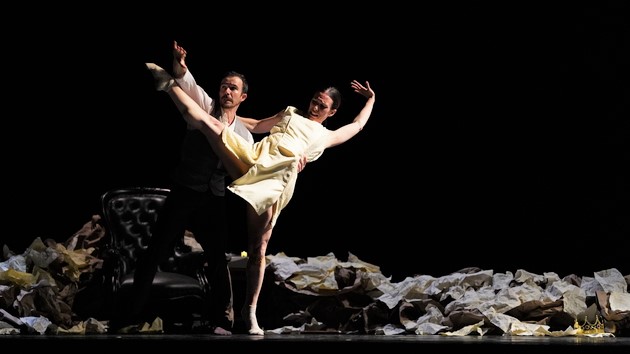
BodyTraffic, the L.A.-based dance company cofounded in 2007 by Lillian Rose Barbeito and Tina Finkelman Berkett, is far from, well, being gridlocked. Indeed, one of a handful of local troupes with national and international name recognition, the eight-member repertory company is riding a wave of success that includes having been named the “company of the future” by The New York Times and one of Dance Magazine’s “25 To Watch” in 2013. In addition, the troupe was selected by the Obama Administration in 2014 to be cultural ambassadors of the United States to Israel and Jordan via DanceMotion USA.
This season is also off to a propitious start, with BodyTraffic beginning a residency at the Wallis Annenberg Center for the Performing Arts in concerts Sept. 26–28. The troupe will present four works by choreographers that will showcase the range of its splendid dancers, a number of whom have trained with, among others, Mikhail Baryshnikov and Hubbard Street Dance Chicago.

With some 30-plus works in its ever-expanding repertory, BodyTraffic, described by the Boston Globe’s Karen Campbell as bursting with “invention, attitude, and urban edge,” is, one might say, continuing its terpsichorean journey in the fast lane. Having met in a ballet class in L.A. in 2005, the East Coast transplants with notable pedigrees — Barbeito has a bachelor’s degree in fine arts from The Juilliard School, and Berkett was a founding member of Baryshnikov’s Hell’s Kitchen Dance — decided to join forces in 2007.
“The first thing we did was that I made a solo on Tina,” said Barbeito, a choreographer with more than 50 works for high schools, competitions and professional dance companies to her credit, “and that was the beginning of it. It was serendipity. We’re artistic soulmates.”
Berkett pointed out that when they started the company, they decided to curate it from the perspective of dancers, “even though Lillian stopped dancing in 2013. I’m still performing with the company,” she added, “but since the inception, we always felt we were fulfilling a mission to broaden the dance scene in L.A. and to fulfill ourselves.”
To that end, the pair sought out a broad range of choreographers, with both overseeing the dancers, training them, and maintaining the repertory. “There are certain pieces that one of us is more go-to,” added Berkett, “but the way we have delegated over the years is that Lillian oversees a large and thriving educational program, and for years I’ve been responsible for development and fundraising.”
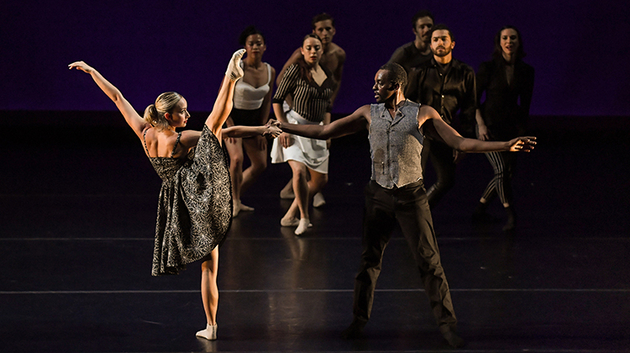
And while BodyTraffic has performed for sold-out audiences at prestigious theaters and festivals around the globe, including in Canada, Mexico, Holland, Poland, and Russia, it’s especially satisfying to be performing on the troupe’s home turf. In fact, the Wallis residency is a result of last year’s successful appearance at the Beverly Hills venue.
Explained Berkett: “We are a value-driven company, taking care of our dancers and building a familial atmosphere where dancers and choreographers can thrive. [Wallis Artistic Director] Paul Crewes picked up on this and was impressed, and soon after our concert he said he’d like us to be a resident company.”
The September concerts promise to be a treat for dance aficionados of all stripes: On tap is the world premiere of Snap, by former BodyTraffic dancer Micaela Taylor; the U.S. premiere of (d)elusive minds, by Netherlands Dance Theater 2 artistic director Fernando Hernando Magadan; the West Coast premiere of Resolve, created by the L.A.-based choreographic duo Wewolf (Rauf “Rubberlegz” Yasit and James Gregg); and a reprise of Matthew Neenan’s A Million Voices, which was first seen at the Wallis last year.
“Each and every one of our commissions has come about in a different fashion,” said Barbeito, “but one thing in common is that Tina and I scour the world over for distinctive choreographic voices. They’re not derivative but are signatures unto themselves. It takes so much to produce a work, so it’s not just the end result we’re after, but we look for an upstanding citizen of the world to inspire our dancers and challenge them. Process is very important to us.”
Of the Magadan piece, Barbeito noted that she and Berkett first went to The Hague, home base of Netherlands Dance Theater (indisputably one of the world’s greatest dance companies), to meet with the choreographer. “It’s a duet for Guzman Rosado, who is our artistic associate,” Barbeito continued, “and when we were finalizing the details of acquiring this piece, Fernando couldn’t come here, so we went there. We also met with him in Vancouver and Madrid. It’s a work we’re excited about and we didn’t want to miss the opportunity to work with him, since his time will become less and less available.”
Commissioning the other duet on the bill, Resolve, a work that brings heart-pumping electronic dance music to life through an intricate and unique movement style, was a no-brainer for Barbeito and Berkett, since Gregg, half of Wewolf, is a former BodyTraffic dancer and rehearsal director.
“He was so artistically pleasing, and at a certain point when he was with us,” Barbeito recalled, “we had a conversation with him about pursuing choreography. We feel that we’re not just helping our dancers fulfill their careers onstage, but we took the initiative with him to talk about choreographing.”
As for working with b-boy/influencer Rubberlegz, Barbeito was quick to add, “He’s so inspiring, and a true artist dedicated to exploring his form. Lillian and I both loved having them in the studio.”
Another dancer the directors nurtured is Micaela Taylor. Though she only performed with BodyTraffic briefly, joining the troupe in January 2016 and touring with them for several months, Taylor’s talent as a dancer/choreographer was evident. Launching her own seven-member company, the TL (“To Love”) Collective in 2016 while still in her early 20s, Taylor has been on the rise ever since.
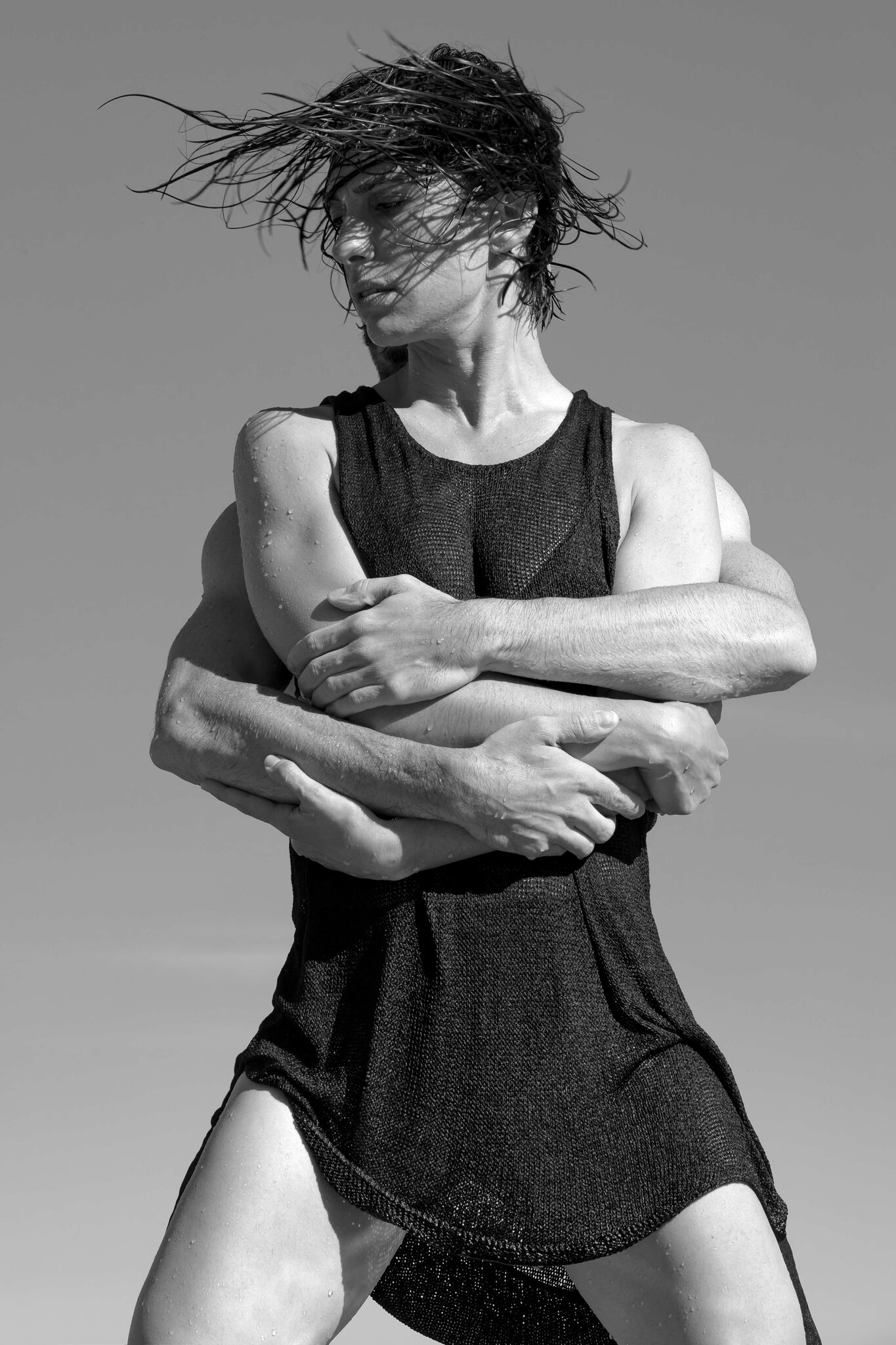
With her canny fusion of hip-hop and contemporary styles, the L.A. native is the recipient of the 2018 Springboard Danse Montréal “Emerge” choreographer award and was recently named one of Dance Magazine’s “25 to Watch.” Taylor has also had her work presented at Jacob’s Pillow Dance Festival and locally at the Ford Amphitheatre, where she was in residence earlier this year. In addition, she danced with and made works on other L.A. troupes, including Ate9 Dance Company and L.A. Contemporary Dance Company.
Taylor said she was surprised when she was asked to make a dance for BodyTraffic. The result is Snap, 20-minutes of high-octane movement inspired by James (“Godfather of Soul”) Brown. In addition to highlighting snippets of Brown’s music and an occasional spoken word, the work features an original score by singer/songwriter David Schocke.
“It was a shock that they would hire me,” exclaimed Taylor, “but at the same time because I know what they go for and that I would choreograph something great, I was flattered. I also felt because they believed in me, it was a boost to my confidence. I knew the caliber Lillian and Tina hold themselves to, so if they were choosing me, it meant that I had something greater than even I had realized in my work.”
Taylor, who will also be dancing in Snap, said that the piece is based on different narratives coming together. “I was intrigued by pop culture and social media and how images are a part of our culture today, but that we only see what people present. I wanted to dive deeper into those narratives where you see all of these different images come to life [and are] initiated by a snap.
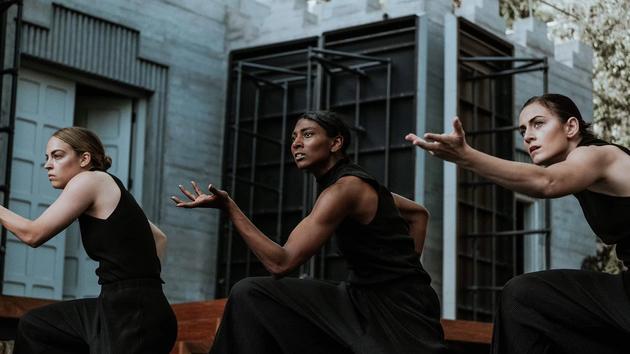
“The first image,” Taylor added, “is James Brown, and automatically you’re seeing a picture of a funky era and then it switches because a snap happens and the whole mood of the story shifts into a deranged quirky emotion.”
Both Berkett and Barbeito are thrilled with Taylor’s work. “We’ve been in the studio during rehearsals, and it’s an absolute pleasure to support Micaela as an artist,” Berkett enthused, “and to think she rose in the ranks with BodyTraffic. I’m learning so much from her physically, and we get to pow-wow during lunch breaks and afterwards about [things like] starting a company and what she should do. That we can share that expertise,” continued Berkett, “is rewarding on so many levels, and I’m hopeful that L.A. loves this piece, because we adore her and want to help her accomplish it.”
Added Barbeito: “Micaela is also one of the most profound performers in her own right. To see her at this stage in her career — how she is inspired to move and put that on other bodies — is so exciting.”
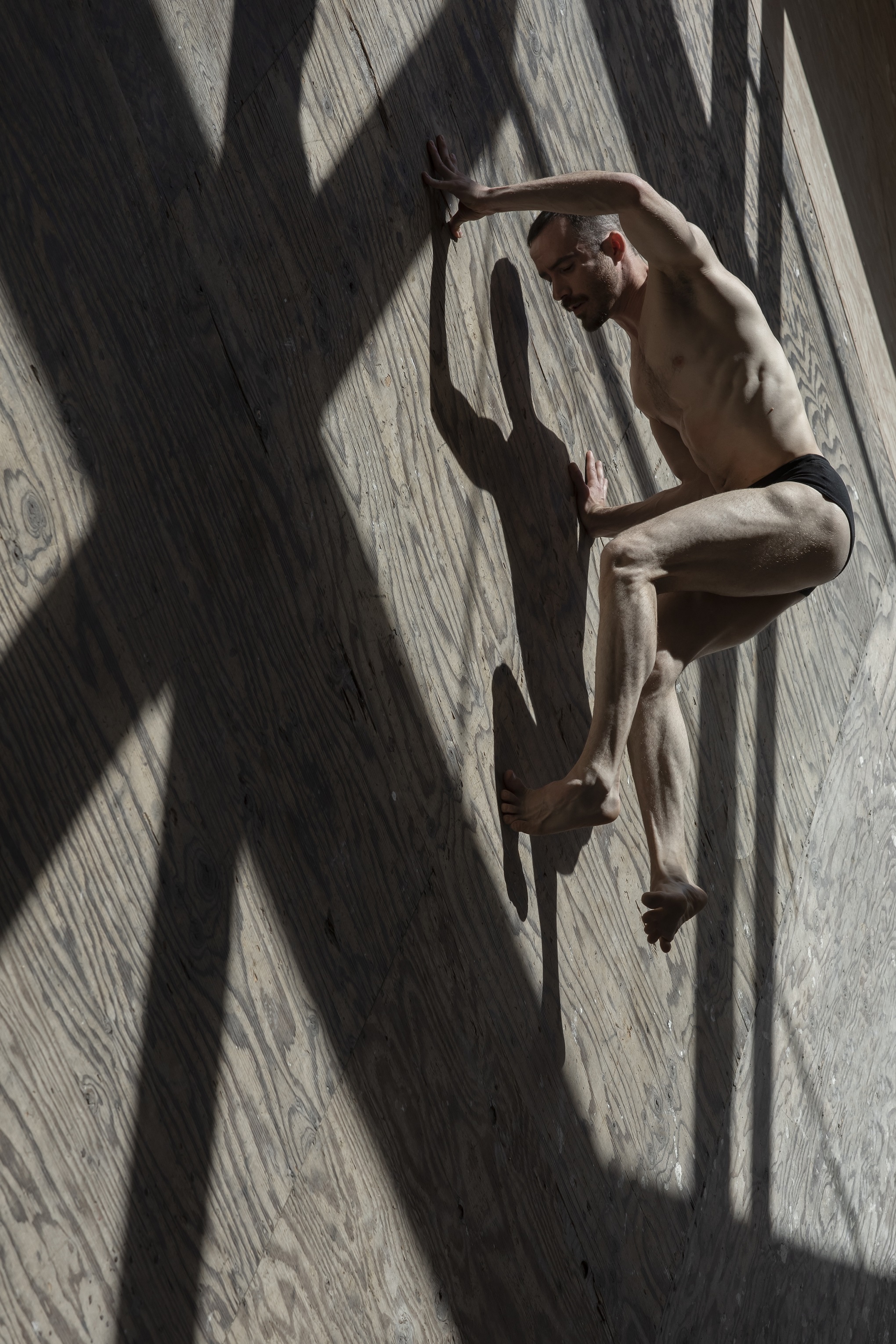
Another exciting prospect for BodyTraffic is the notion that, as part of its residency, the Wallis will be producing a new work for the troupe in the spring, The Minghella Project. Based on a series of texts that the late film director Anthony Minghella wrote for dance, the work was left to choreographer Jonathan Lunn.
Wallis Artistic Director Crewes recounted the genesis of the piece: “I worked with Jonathan 30 years ago at London Contemporary Dance Theatre. He went to university with Anthony and I told him to see BodyTraffic because I thought they would be great [for this work]. When Jonathan met with Tina, they got on like a house on fire.
“The idea of collaborating as well as presenting BodyTraffic’s work was part of the mix to become a company in residence, which is a title really. It’s a way of us saying we want to support you as a company; we want to support your work and develop your work.”
With Crewes helping foster L.A.’s exploding dance scene, he also decided it was time to program all local troupes at the Wallis this season. In addition to BodyTraffic, audiences will have the opportunity to see Lula Washington Dance Theatre, Heidi Duckler Dance, Contra-Tiempo, Diavolo|Architecture in Motion, and Blue 13 Dance Company.
He explained: “A number of things triggered the idea. One is that I think dance companies in L.A. are punching above their weight. I felt that something was happening with the dance scene here and I wanted to respond to that. The idea that L.A.’s a very multicultural city and dance is very much a part of that [made me] want to represent the range of companies and the social mosaic of those different communities in L.A. and highlight that.

“I’m trying to support those companies in showing that work,” Crewes added. “Some companies tour internationally and nationally, some it might be time to be on a big stage. Lula Washington is celebrating her 40th anniversary, Heidi her 35th, and Blue 13 is a relatively young company. It felt right to me, instinctively, to promote the L.A. dance scene here at the Wallis. There’s an energy about dance here that is fantastic.”
Barbeito and Berkett share Crewes’s thoughts about dance’s rising profile in L.A., a departure from the time when Berkett made the decision to move here. “I was dancing for Misha — Mikhail Baryshnikov — when I told him I was coming to L.A. He conveyed to me a concern. ‘What are you going to do there? Who are you going to dance with? How are you going to build a career?’
“It sat with me — it makes me emotional,” continued Berkett, “because I felt such an overwhelming responsibility in my career that’s impactful. Lillian and I both felt so committed to L.A. There’s so much pride when we tour and say we’re from L.A. I love it here. It’s been amazing.

“When Lillian and I started,” Berkett recalled, “we would drive people to come work here and would say, ‘We’ll put you up by the beach, we’ll buy you avocados.’ It’s so different now. We owe it to others in the community who are doing incredible work to let them know how much our city has changed, and I’m so proud of it.”
Barbeito agreed. “L.A. right now is one of the hottest places for dance. It’s always been the place for commercial dancers who are thriving in hip-hop and commercials, but now the concert dance world feels very exciting. It’s always been a fabulous training ground in Southern California, but then the dancers would go to work in New York, Chicago, or San Francisco.
“Because of BodyTraffic’s summer program where the students are college-age dancers,” she added, “we get people from across the country, and where they want to move is L.A. — not because of the weather, but because of the high caliber of work here. I’m thrilled that Tina and I helped pave the way here for concert dance.”




